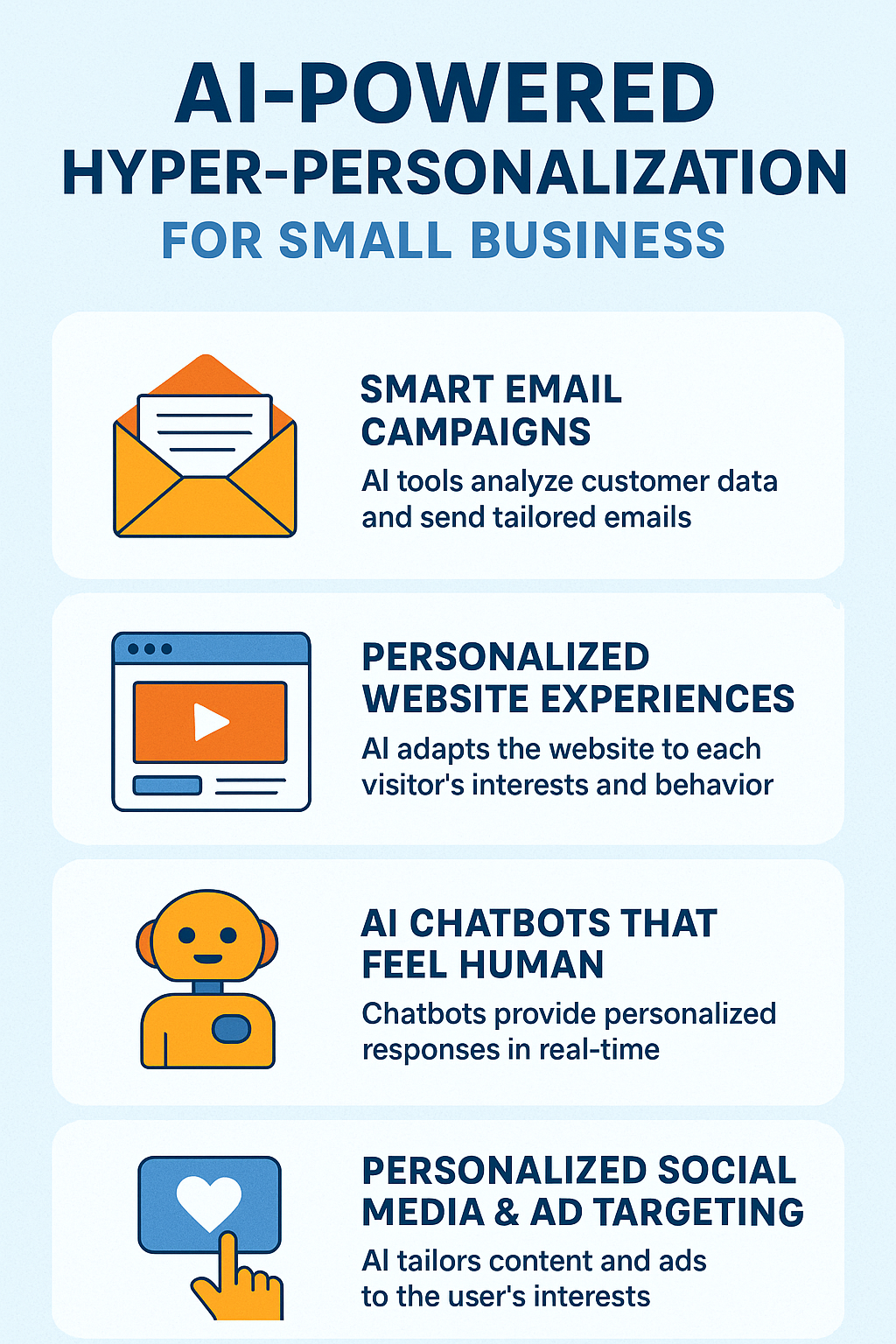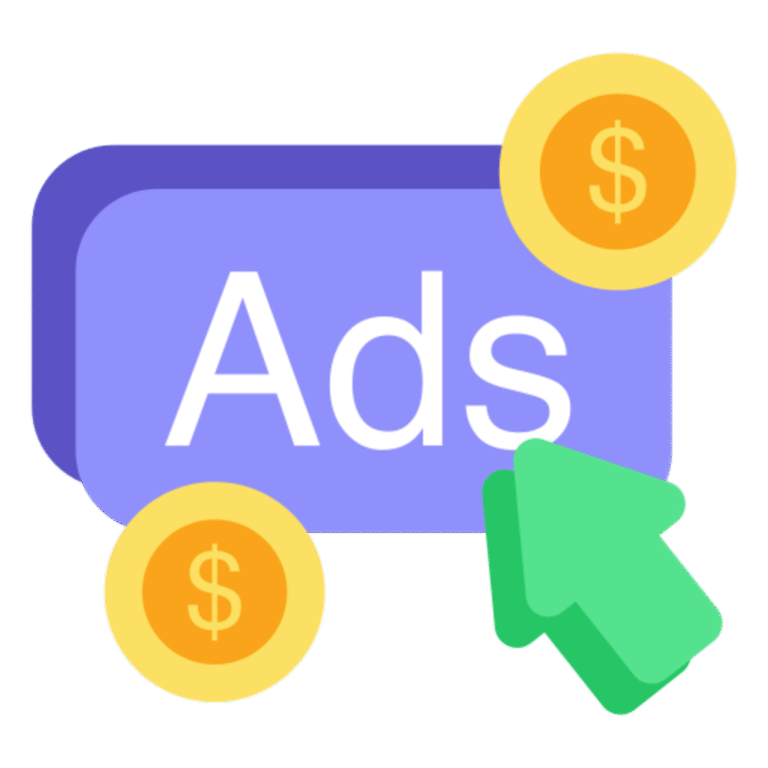
Leverage AI-Powered Hyper-Personalization to Boost Business Growth
Customers expect more than generic marketing messages — they want communication that feels relevant, timely, and tailored to their specific needs. For small businesses, this used to be difficult without large teams or complex data systems.
AI-powered hyper-personalization is a game changer, allowing small businesses to deliver big-brand experiences with small budgets.
Below, we break down what hyper-personalization is, why it matters, and how local businesses can start using AI to attract more customers, increase sales, and build stronger loyalty.
What Is AI-Powered Hyper-Personalization?
Hyper-personalization goes beyond simply using a customer’s name. It uses AI, machine learning, and real-time data to understand customer behaviors, interests, and intent — then delivers content or offers uniquely suited to them.
With the help of AI tools, small businesses can personalize:
-
Emails
-
Website experiences
-
Product recommendations
-
Social media messages
-
Ads
-
SMS and chatbot interactions
The result? Marketing that feels like a 1:1 conversation — at scale.
Why Hyper-Personalization Matters for Small Businesses
1. Higher Engagement
Personalized content gets more clicks, opens, and responses because it matches what customers actually care about.
2. Better Conversions
When customers receive offers based on their browsing, purchase history, or interests, they’re far more likely to buy.
3. Improved Loyalty
Personalized communication helps small businesses build trust and long-term relationships — a huge advantage over larger, less human brands.
4. Time Savings
AI handles heavy data lifting automatically, giving owners and small teams more time to run the business.
Ways to Use AI-Powered Hyper-Personalization (Even with a Small Budget)
1. Smart Email Campaigns
AI tools can analyze your customer list and automatically send tailored emails based on:
-
Past purchases
-
Seasonal interests
-
Engagement history
-
Customer behavior on your website
Examples:
-
A bakery sends “Buy One Get One” offers to customers who regularly buy treats.
-
A salon sends personalized reminders based on each customer’s typical appointment cycle.
2. Personalized Website Experiences
AI-driven website tools can adapt content for each visitor.
Examples:
-
Show products similar to what a visitor viewed last time.
-
Promote local events or services based on location.
-
Offer coupons to returning customers who haven’t purchased recently.
Even small businesses using Shopify, WordPress, or Squarespace can integrate these tools easily.
3. AI Chatbots That Feel Human
Modern chatbots do far more than answer FAQs — they analyze behavior and personalize responses in real time.
Uses include:
-
Offering product recommendations
-
Booking appointments
-
Guiding shoppers to the right service
-
Following up with tailored messages
This creates a 24/7 sales assistant without added staffing costs.
4. Personalized Social Media & Ad Targeting
AI can help you tailor posts, captions, and offers by analyzing what your audience engages with most.
For ads, AI can automatically create:
-
Lookalike audiences
-
Interest-based segments
-
Dynamic ads showing the exact product someone viewed yesterday
This saves money and increases ROI.
5. Predictive Recommendations
AI can anticipate what customers might want next.
Examples:
-
A fitness studio recommends classes based on past attendance.
-
A boutique suggests outfits that match previous purchases.
-
A landscaping company sends seasonal service reminders tailored to each customer’s yard history.
Predictive personalization increases repeat business — one of the most valuable revenue drivers for small companies.
What Small Businesses Need to Get Started
You don’t need a tech team. You only need:
-
A CRM (customer relationship management system) or customer list
-
A data source (website analytics, email behavior, purchase history)
-
An AI tool (many are affordable or even free)
-
Clear goals — more leads, higher sales, better retention, etc.
Final Thoughts: AI Levels the Playing Field for Small Businesses
AI-powered hyper-personalization is no longer a luxury — it’s a competitive advantage. It helps small businesses deliver tailored experiences that keep customers engaged and loyal, all while saving time and costs.
When done right, hyper-personalization turns simple interactions into meaningful customer relationships — and meaningful relationships into increased revenue.






